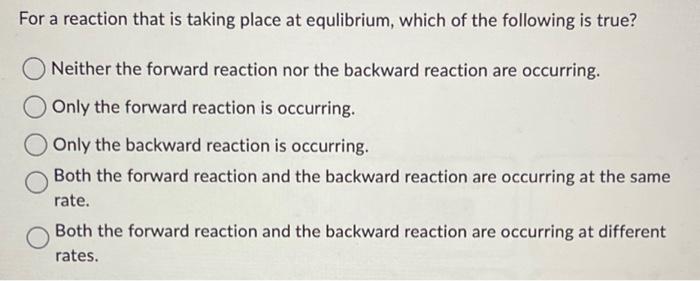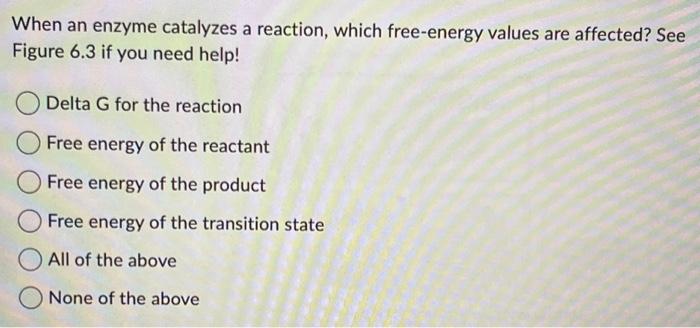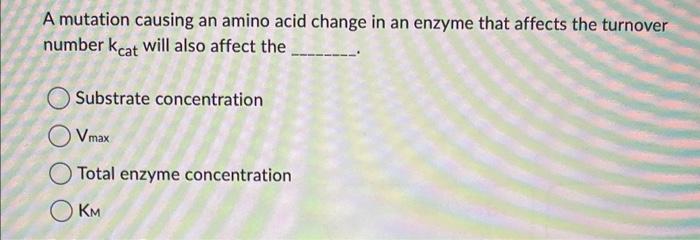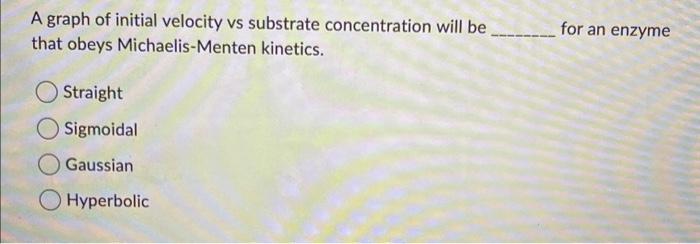Answered step by step
Verified Expert Solution
Question
1 Approved Answer
PLEASE HELP!!! For a reaction that is taking place at equlibrium, which of the following is true? Neither the forward reaction nor the backward reaction
PLEASE HELP!!! 









For a reaction that is taking place at equlibrium, which of the following is true? Neither the forward reaction nor the backward reaction are occurring. Only the forward reaction is occurring. Only the backward reaction is occurring. Both the forward reaction and the backward reaction are occurring at the same rate. Both the forward reaction and the backward reaction are occurring at different rates. A reaction with a positive delta G can take place spontaneously if an enzyme is added. True False When an enzyme catalyzes a reaction, which free-energy values are affected? See Figure 6.3 if you need help! Delta G for the reaction Free energy of the reactant Free energy of the product Free energy of the transition state All of the above None of the above Consider Figure 8.4 in your textbook. Imagine that the reaction catalyzed by carboxypeptidase (PEP) was disfunctional in a cell. Would the reaction still occur? Choose the best response. Yes, but it would be unobservable because the half-life of the uncatalyzed reaction is so slow. No, because chemical reactions do not occur in the absence of a catalyst. No, because the half-life is so slow. Yes, and it would be observable because the half-life of the uncatalyzed reaction is so fast. A catalyst lowers the activation energy barrier to the same extent in both directions of a chemical reaction. [Note: See Figure 8.5 and the first full paragraph of p. 240.] True False Which of the following statements describes the Michaelis-Menten constant, K? Select all that apply. It is a measure of the rate of a catalytic process. It is numerically equal to the substrate concentration required to reach half maximal velocity for an enzyme-catalyzed reaction. It is a measure of the affinity between the enzyme and the substrate. It is a measure of enzyme efficiency. A mutation causing an amino acid change in an enzyme that affects the turnover number kcat will also affect the Substrate concentration Vmax Total enzyme concentration KM A graph of initial velocity vs substrate concentration will be that obeys Michaelis-Menten kinetics. for an enzyme Straight Sigmoidal Gaussian Hyperbolic The Lineweaver-Burk plot is a double reciprocal plot of 1/v versus 1/[S]. The slope reveals what kind of information? 1/Vmax The slope of the Lineweaver Burk plot does not reveal any useful information. 1/KM KM/Vmax Which is appropriate for initial rate method experiments to analyze an enzymecatalyzed reaction? Substrate concentration is constant and the rate is measured at different concentrations of enzyme. Enzyme concentration is constant and the rate is measured at different substrate concentrations. Both enzyme and substrate concentrations are constant. The temperature is varied and the rate is measured. The substrate and enzyme concentrations are varied inversely with respect to one another and the rate is measured 









Step by Step Solution
There are 3 Steps involved in it
Step: 1

Get Instant Access to Expert-Tailored Solutions
See step-by-step solutions with expert insights and AI powered tools for academic success
Step: 2

Step: 3

Ace Your Homework with AI
Get the answers you need in no time with our AI-driven, step-by-step assistance
Get Started


